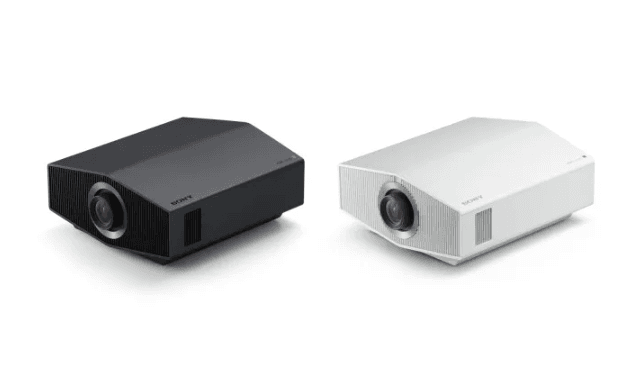
Sony became the latest company to unveil an enhanced lineup of projectors at IFA 2024 this week with the debut of the new Bravia 8 (VPL-XW6100ES) and Bravia 9 (VPL-XW8100ES) models. They’re billed as 4K laser-based home theatre projectors and they will cost a small fortune, but that’s the price you’re required to pay for true, cinema-like aesthetics.
The new projectors are the first in Sony’s lineup to carry the same naming convention as its Bravia TVs, and the headline feature of both models is that they’re the first devices of their kind to package Sony’s latest XR processing chip.
What’s interesting is that, according to Sony, the XR processor on these devices is a modified version of the chip that made its debut on the Bravia 8 and Bravia 9 televisions that were announced earlier this year.
Those modifications are said to make the chips better able to support the mass of high-end features found on the projectors, such as the company’s proprietary XR Deep Black, XR Dynamic Tone Mapping, XR Clear Image and XR Triluminos technologies.
For the unaware, Sony’s XR Deep Black is designed to enhance black levels and shadow details, while XR Dynamic Tone Mapping helps to analyse and map the brightest parts of the image at a frame-by-frame level. The other two features, meanwhile, are meant to enhance the projector’s image upscaling capabilities.
Both of the models utilise Sony’s new Z-Phosphor laser light tech, and this enables them to deliver extremely bright images. As the more expensive option, the Bravia 9 is said to deliver higher brightness of 3,400 lumens, the company said, while the Bravia 8 can reach a maximum of 2,700 lumens, which should still be bright enough for daytime viewing with the curtains drawn.
They’re both able to support 4K resolution images at up to 120Hz, and Sony quotes an input lag of just 12 milliseconds, thanks to the two HDMI 2.1 ports and their support for Auto Low-Latency Mode, which should make them a decent option for big-screen gaming.
For easy set up, Sony has incorporated Corner Keystone correction functionality, which should help in settings that are less than ideal, such as if the projector needs to be placed on an uneven surface.
The more expensive model, the Sony Bravia 9 projector, comes with a feature called Live Colour Enhancer, which is designed to enhance its performance in brightly-lit environments. This feature was first introduced on Sony’s older VPL-XW7000ES model, and it was widely praised by a number of reviewers at the time of its launch. Sony promised the tech will work even better now thanks to the XR processing smarts of the Bravia 9. It’s meant to help ensure the colours remain intact, vivid, and accurate, “without compromising on saturation,” Sony explained.
Christopher Mullins, Home Cinema Product Manager at Sony’s Professional Displays and Solutions business unit, said the Bravia 8 and 9 projectors showcase the company’s 50+ year’s experience in delivering home cinema solutions to customers.
“With the technology of our Sony Bravia XR Processor now powering our projectors, these enhanced new products demonstrate our continued mission to ensure customers can enjoy the excitement and immersion of a professional-grade cinematic viewing experience from their very own home,” he promised.
Of course, readers should note that the price of a “professional-grade” cinema experience in the comfort of their own homes is not cheap, with the cheaper Bravia 8 model set to retail for £15,999 when it goes on sale in November.
The price of the Bravia 9 projector, meanwhile, is significantly more, at £25,999, the company said. That puts it on a par with JVC’s powerful DLA-NZ900, which launched in May and boasts some equally impressive specs and high-end features.